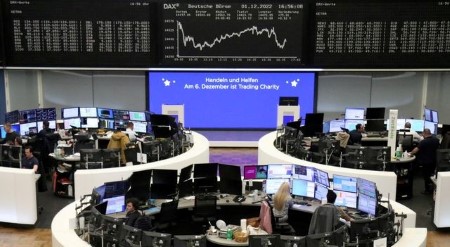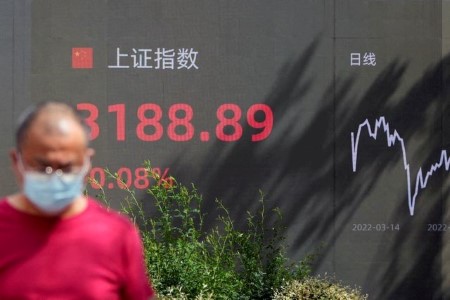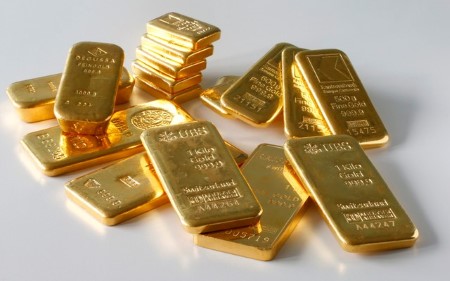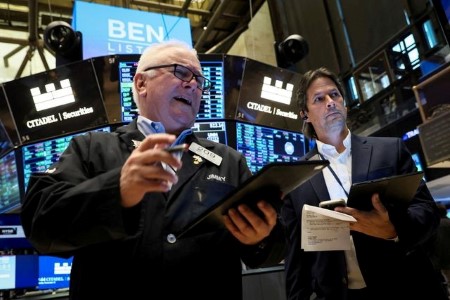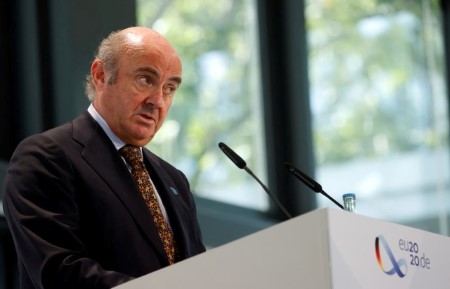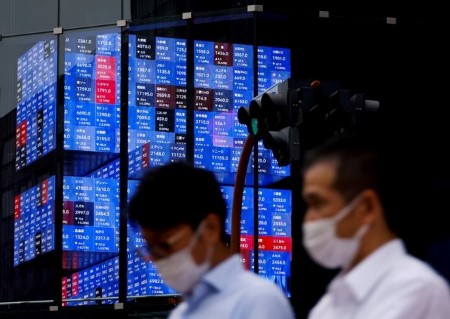Dec 5 (Reuters) – European shares slipped on Monday after data showing a decline in euro zone business activity fanned recession fears, while hopes of easing of stringent COVID-19 curbs in China boosted miners and other China-exposed equities.
The region wide STOXX 600 closed 0.4% down.
The index had notched gains for the seventh straight week on Friday, helped by China-led optimism and easing worries over aggressive interest rate hikes.
Data on Monday showed euro zone business activity declined for a fifth month in November, suggesting the economy was sliding into a mild recession.
Governing council member Gabriel Makhlouf said the European Central Bank is likely to raise interest rates by 50 basis points (bps) next week on the way to potentially moving beyond a deposit rate of 3% amid ongoing inflationary concerns.
Most of the STOXX 600 sectors were in the red, with rate-sensitive technology stocks and consumer staples such as Nestle (NESN) and L’Oreal (OREP) being the biggest drag on the index.
“The ECB still has to be pretty strong, despite the fact that clearly activity in the euro zone is contracting a bit and it does look like Europe is on the cusp of a shallow recession,” said Danni Hewson, financial analyst at AJ Bell.
UK’s resource-heavy FTSE 100 was the only regional index in green, up 0.2%, helped by a jump in miners and China-exposed financials like Prudential.
“FTSE 100 is outperforming because of its make -,” added Hewson. “On balance, the expectation is that China will relax restrictions.”
Miners gained 0.6% as prices of base and precious metals rose with investors cheering the prospects of a broader policy shift in top consumer China in the wake of historic protests last month over COVID restrictions.
In company news, shares of Vodafone Group (VOD) slipped after the British mobile operator said Chief Executive Officer Nick Read would step down at the end of this year.
Credit Suisse (CSGN) gained 2.9%. Investors including Saudi Arabia’s crown prince and a US private-equity firm run by a former Barclays chief executive have shown interest in investing USD 1 billion or more in Credit Suisse’s new investment banking unit, the Wall Street Journal reported on Sunday.
(Reporting by Amruta Khandekar and Bansari Mayur Kamdar in Bengaluru; Editing by Vinay Dwivedi, Sherry Jacob-Phillips and Jonathan Oatis)







 DOWNLOAD
DOWNLOAD




